Technical Analysis Elliott Waves
One of the only tools that can give you an idea in which direction the stock price is going to move next, is the use of Elliott waves.
With short, medium and long term Elliott waves trend analysis we can have a pretty good indication if price has a better chance going up or going down in those different periods. In addition it can give us price targets.
Your Elliott wave count does not have to be perfect. You most probably will have to review counts regularly. What is important at the end is that when you expect an up move, price makes an up move.
In my book "Capturing Profit with Technical Analysis", there is a small tool that will help you making Elliott wave counts.
Introduction
During an illness in the mid-1930s, Ralph Nelson Elliott discovered the correlation between human emotion and trend patterns contained within price charts.
Elliott discovered different patterns that repeated themselves in form but not necessarily in size or length of time; these patterns could always be subdivided into smaller waves within the framework of certain rules. He called this phenomenon the “wave principle.”
There are two basic waves in Elliott wave theory: a five-wave impulse pattern in the direction of the main trend and a three-wave correction pattern against the main trend.
In a later stage, Elliott used Fibonacci numbers together with the waves to predict target prices.
The Elliott wave principle gained wide attention in the 20th century during the 70s thanks Frost and Prechter, who published the legendary book, Elliott Wave Principle: Key to Stock Market Profits, 1978. During the economic crisis of the seventies, this book forecasted the big bull market of the eighties.
Impulse and Correction Waves
A trend signals the main direction in which prices are moving; corrections move either against the main trend or sideways.
In Elliott wave terminology, these are called impulse waves and correction waves.

Figure 7.1: An impulse wave consists of five waves.
In figure 7.1, you can see that an impulse wave consists of five waves: three in the direction of the trend (waves 1, 3, and 5) and two against the trend (waves 2 and 4).
The correction wave consists of three waves: A, B, and C. Impulse waves are identified by numbers; correction waves are identified by letters.

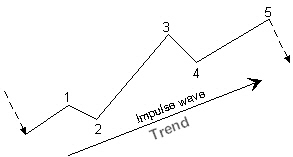


Figure 7.2: Impulse wave in a downtrend. Figure 7.3: Impulse wave in an uptrend.
Figure 7.2 is an impulse wave in a downtrend and figure 7.3 is an impulse wave in an uptrend.

Figure 7.4: Waves 1-3-5 in the direction of the trend.
In figure 7.4, waves 1, 3, and 5 moving in the direction of the trend are impulse waves and, therefore, consist of another impulse wave of a lower degree.

Figure 7.5: 3-wave correction waves in an uptrend and in a downtrend.
Figure 7.5 shows correction waves in an uptrend and in a downtrend. The correction wave has three waves. Waves A and C point in the direction of the correction; wave B is moving against this direction. Waves 2 and 4 in an impulse wave also are correction waves. Waves A and C in a correction wave move in the direction of the correction trend and are therefore impulse waves, again consisting of five waves.

Figure 7.6: 5-wave triangle corrections in an uptrend and in a downtrend.
Figure 7.6 shows triangle corrections in an uptrend and in a downtrend. A triangle correction consists of five waves.
IMPORTANT! A triangle correction is part of an ABC correction wave.
Technical Analysis Elliott Waves
The Correct Count
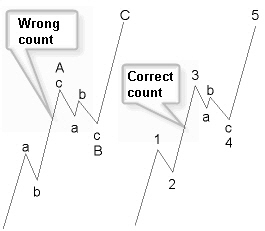 Any impulse wave can be interpreted as a correction wave, but it is, of course, wrong to do this because the Elliot wave count will be completely wrong.
Any impulse wave can be interpreted as a correction wave, but it is, of course, wrong to do this because the Elliot wave count will be completely wrong.
In figure 7.9, a longer 3 wave, followed by a 4 wave with an endpoint above the top of wave 1, must be labeled as an impulse wave.
When you mark wave 3 as an A wave, consisting of sub-waves abc, you would next expect a flat correction, with a B wave falling back in the neighborhood of the wave A start. This is clearly not the case here. Respecting all the rules is important.
Figure 7.9: Correctly counting waves.
Number of Waves in a Cycle
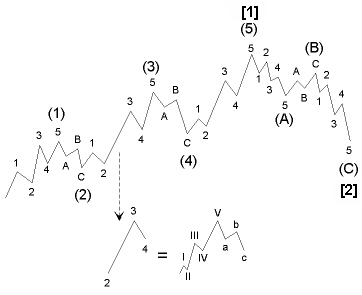
Figure 7.10: Number of waves in a cycle.
An impulse wave and a correction wave together make a cycle (figure 7.10).
Biggest wave: [1] to [2] consist of 1 + 1 = 2 waves
Biggest subdivision: (1) to (C) consist of 5 + 3 = 8 waves
Next subdivision: 1 to C consist of 21 + 13 = 34 waves
Next subdivision: I to c consist of 89 + 55 = 144 waves
Biggest subdivision: (1) to (C) consist of 5 + 3 = 8 waves
Next subdivision: 1 to C consist of 21 + 13 = 34 waves
Next subdivision: I to c consist of 89 + 55 = 144 waves
This subdivision is not limited.
Waves Subdivisions
The basic rule in Elliott wave theory is that wave structures of a higher order are composed of sub-waves of a lower order, which, in turn, are composed of smaller order sub-waves, and so on. They all have, more or less, the same structure as the bigger wave they belong to, impulse or correction.
Elliott used nine subdivisions, varying in length from two centuries to one hour prior.
In the next table, we use our own subdivision ordered by time.
The timing used gives an idea about what kind of period we are looking at, but it is not binding.
In the next table, we use our own subdivision ordered by time.
The timing used gives an idea about what kind of period we are looking at, but it is not binding.
Subdivision
|
Time
|
Impulse
|
Correction
|
Grand Super cycle
|
> 30 years
|
[I] … [V]
|
[A] … [C]
|
Super cycle
|
Decades
|
(I)…(V)
|
(A)…(C)
|
Cycle
|
Decade
|
I…V
|
A…C
|
Primary
|
Years
|
[1]…[5]
|
[A]… [C]
|
Intermediate
|
Months
|
(1)…(5)
|
(a)…(c)
|
Minor
|
Weeks
|
1…5
|
A…C
|
Minute
|
Days
|
i…v
|
a…c
|
Minuet
|
Hours
|
1…5
|
a…c
|
Sub minuet
|
Minutes
|
I…V
|
A…C
|
Impulse Patterns
Impulse Wave
Recognizing wave patterns is the most important occupation within Elliot wave analysis.

Figure 7.11: 5-wave impulse waves in an uptrend and a downtrend.
An impulse wave (figure 7.11) is always composed of 5 waves, numbered 1, 2, 3, 4, and 5. Waves 1, 3, and 5 are, again, impulse patterns. Waves 2 and 4 are correction patterns.
Rules and Guidelines
The following are the most important rules and guidelines for an impulse pattern.
- Wave 1 is an impulse wave or a starting wedge impulse wave.
- Wave 2 can be any type of correction pattern, except a triangle.
- Wave 2 cannot move beyond the start of wave 1.
- Wave 3 is an impulse wave.
- Wave 3 has a bigger price move than wave 2.
- Wave 3 is never smaller compared to waves 3 and 5.
- Wave 4 can be any type of correction pattern.
- Waves 2 and 4 are not overlapping.
- Wave 5 is an impulse wave or an ending wedge impulse wave.
- The price move of wave 5 is a minimum 70% of wave 4.
A wave 5 ending below the top of wave 3 is called a failing wave 5.
Structure
An impulse pattern is composed of 5 waves. The internal structure of these waves is: 5-3-5-3-5. The 5-waves are impulse waves, and the 3-waves are correction waves.
The Correct Count

Figure 7.12: Impulse wave correct count.
Look at figure 7.12 for correct interpretation of wave counts.
Alternation within Impulse Waves
Sharp corrections are zigzags. Sideway corrections consist of flat corrections, triangles, double, and multiple corrections.
- If wave 2 is a sharp correction, wave 4 will be a sideway correction eight out of ten times.
- If wave 2 is a sideway correction, there is no alternation; wave 4 will be a sideway correction eight out of ten times.
- It is remarkable that wave 4 makes a sideway correction eight out of ten times.
- Extensions alternate by variation in length of the impulse wave. Wave 1 is short, wave 3 has an extension and is long, and wave 5 is short again.
- Extensions are most common in wave 3, but also in wave 5; this can be considered an alternation.
Price Targets and Fibonacci Levels
Many times, price targets are given by Fibonacci projections. Price retracement during a correction phase often will reach Fibonacci retracement levels.
Looking at wave 1 as an example, you will notice that, in most cases, it will retrace 23.6% up to 38.2% of the complete previous correction wave. Fifty percent retracement or more is rare for wave 1.
Extension of an Impulse Pattern
Waves 1, 3, 5, and A or C, if they are impulse waves, can be extended and therefore take much more time than the other waves.

Figure 7.13: Wave extensions are very common in wave 3.
Technical Analysis Elliott Waves
Starting Wedge Impulse Wave
The starting wedge impulse wave can only appear in waves 1 or A.

Figure 7.16: Starting wedge impulse wave.
In figure 7.16, there may be, at first, some confusion when waves 3 and 4, within the starting wedge impulse wave, are seen as the start of an extension waves 1 and 2.
You must recognize the starting wedge impulse wave at the start of wave 5 by drawing the wedge pattern.
You must recognize the starting wedge impulse wave at the start of wave 5 by drawing the wedge pattern.
You know now that the starting wedge impulse wave 5 is really just the top of wave 1 of a higher order wave. The wave that follows is not an extended impulse wave 3, but a correction wave 2.
Rules and Guidelines
- This pattern has 5 waves.
- The price is moving between 2 converging lines, a wedge pattern.
- Wave 1 is an impulse wave or a lower order starting wedge impulse wave.
- Wave 2 is any correction pattern, except a triangle.
- Wave 2 is always smaller than wave 1.
- Wave 3 is an impulse pattern.
- Wave 3 is always bigger than wave 2.
- Wave 3 is never the smallest wave compared to waves 1 or 5.
- Wave 4 can be any correction pattern.
- Waves 4 and 2 are partly overlapping.
- Wave 5 is an impulse pattern or an ending wedge impulse wave.
- Wave 5 is a minimum 50% of the size of wave 4.
The 5 waves of a starting wedge impulse wave have a 5-3-5-3-5 structure.
Example CXP (Corporate Express):
Figure 7.17 is a wave 1 starting wedge impulse wave, starting a new rising trend.
Figure 7.17 is a wave 1 starting wedge impulse wave, starting a new rising trend.

Figure 7.17: Corporate Express, starting wedge impulse wave example.
Ending Wedge Impulse Wave
Ending wedge impulse waves are rare in high order impulse waves. They mostly are found in lower order impulse waves. Because the ending wedge impulse wave is a 5 impulse wave or a wave C correction wave, there will be a market reversal on wave completion.

Figure 7.18: Ending wedge impulse wave.
Figure 7.18 shows an ending wedge impulse wave that can be found in impulse wave 5 or correction wave C.

Figure 7.19: Descending ending wedge impulse wave.
Figure 7.19 shows a descending ending wedge impulse wave.
At first, there may be some confusion when waves 3 and 4, within the ending wedge impulse wave, are seen as the start of extension waves 1 and 2. It is important to recognize the ending wedge impulse wave at the start of wave 5 by drawing the wedge pattern.
You know now that the ending wedge impulse wave 5 is really the end of wave 5 of a higher order wave.
The wave that follows is not an extended impulse wave 3, but a bigger correction wave.
The ending wedge impulse wave can be easily recognized by the internal 3-3-3-3-3 structure.
Rules and Guidelines
- This pattern consists of 5 waves.
- The price is moving between two converging lines, a wedge pattern.
- Waves 1, 3, and 5 are zigzag patterns.
- Wave 2 is any correction pattern, except a triangle.
- Wave 2 is always smaller than wave 1.
- Wave 3 is always bigger than wave 2.
- Wave 3 is never the smallest wave compared to waves 1 or 5.
- Wave 4 can be any correction pattern.
- Waves 4 and 2 are partly overlapping.
- Wave 5 is a minimum 50% of the size of wave 4.
The 5 waves of an ending wedge impulse wave have a 3-3-3-3-3 structure.
Example AAI (Airtran Holdings Inc):

Figure 7.20: Airtran Holdings, an example of an ascending ending wedge impulse wave.
Figure 7.20 is an example of an ascending ending wedge impulse wave.
Technical Analysis Elliott Waves
Correction Patterns
- Recognizing correction waves is more difficult than recognizing impulse waves.
- There are more correction patterns than impulse patterns.
- Correction patterns have the tendency to develop more complex combinations.
- The most important rule is that a correction wave of the same order can never have 5 waves.
- Only impulse waves have 5 waves.
- A correction consisting of a 5 impulse wave can therefore never be the end of that correction.
Zigzag
The zigzag pattern shown in figure 7.21 is the most common correction structure.

Figure 7.21: The zigzag pattern is the most common correction structure.
A zigzag can consist of one zigzag, a double zigzag, or, rarely, a triple zigzag. The zigzag belongs to the family of sharp corrections.
Rules and Guidelines
- A zigzag correction has three waves.
- Wave A is an impulse wave or a starting wedge impulse wave.
- Wave B can be any kind of correction pattern.
- Wave B is smaller than wave A.
- Wave C is an impulse wave or an ending wedge impulse wave.
- Wave C is not an ending wedge impulse wave if wave A is a starting wedge impulse wave.
A simple zigzag pattern has three waves. A double zigzag pattern has seven waves, two simple zigzags separated by an X wave. A triple zigzag has 11 waves with two X waves.
The structure of the three waves in a simple zigzag is 5-3-5 and 5-3-5-3-5-3-5 in a double zigzag.
Double and Triple Zigzag Patterns
We use WXY to denote a double zigzag, instead of the standard ABCXABC Elliott notation. For the triple zigzag, this becomes WXYX²Z.

Figure 7.22: Double zigzag pattern using WXY notation.
As you can see in figure 7.22, this is a more consistent way of notation because more zigzags of a lower order (ABC) are connected together by a higher order wave (XYZ).
Rules and Guidelines
- Wave W must be a zigzag pattern.
- Wave X can be any correction pattern, except an inverted broadening triangle.
- Wave X is smaller than wave W.
- Wave Y must be a zigzag pattern.
- Wave Y is, at minimum, equal or bigger than wave X.
- Wave X² can be any correction pattern, except an inverted broadening triangle.
- Wave X² is smaller than wave Y.
- Wave Z must be a zigzag pattern.
- Wave Z is, at minimum, equal or bigger than wave X²
Technical Analysis Elliott Waves
Flat Corrections
Flat corrections are very common.
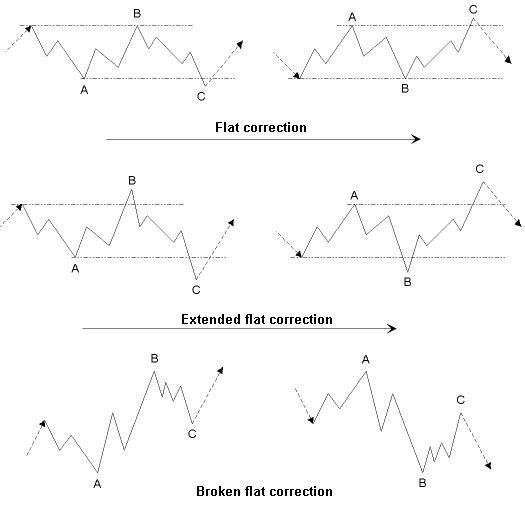
Figure 7.23: Flat corrections.
Note in figure 7.23 that waves A and B of a flat correction are both three-wave correction patterns. Wave C is an impulse pattern and usually does not pass much farther than the end of wave A.
Flat corrections mostly can be found in B waves, but they appear also in waves 2 and 4. In an extended flat correction, waves B and C move past wave A. In a broken flat correction, wave A is passed by wave B, but wave B is still a correction pattern.
Rules and Guidelines
- Wave A can be any correction pattern.
- Wave B can be any kind of correction pattern, except a triangle.
- Wave B takes at least 50% back of wave A.
- Wave B is never more than 200% of wave A.
- Wave C is an impulse wave or an ending wedge impulse pattern.
- Wave C is never more than 300% of wave A.
- Wave C is never more than 200% of waves A and B.
- Wave C moves into the territory of wave A.
Double and Triple Flat Corrections
Just like with the zigzag, in the flat correction, we have variants with a double and a triple flat correction.
A double flat correction is quite common, and a triple flat correction is rare.
A double flat correction is composed of two flat corrections connected via a correction pattern.
A triple flat correction is composed of three flat corrections connected via correction patterns.
We use WXY to denote a double flat correction, instead of the standard ABCXABC Elliott notation.
For the triple flat correction, this becomes WXYX²Z. This is a more consistent way of notation because more flat corrections of a lower order (ABC) are connected together by a higher order wave (XYZ).
Rules and Guidelines
- Wave W is any correction pattern, except a triangle or a double or triple pattern.
- Wave X is any correction pattern, except a triangle or a double or triple pattern.
- Wave X is a minimum 50% of wave W.
- Wave X is a maximum 400% of wave W.
- Wave Y is any correction pattern, except a double or triple pattern.
- Wave Y is bigger than wave X, except with a triangle pattern.
- Wave X² is any correction pattern, except a triangle or a double or triple pattern.
- Wave X² is a minimum 50% of wave Y.
- Wave X² is a maximum 400% of wave Y.
- Wave Z is any correction pattern, except a double or triple pattern.
- Wave Z is not a zigzag if wave Y is a zigzag.
Wave Z is bigger than wave X².
Technical Analysis Elliott Waves
Triangles
A triangle correction pattern has the form of a triangle.
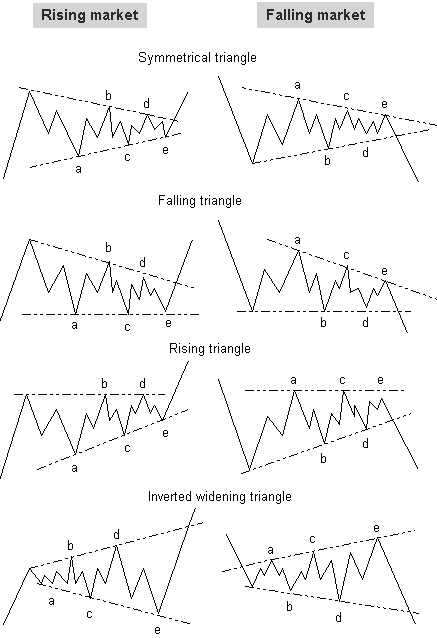
Figure 7.24: Different types of triangle correction patterns.
Figure 7.24 shows the different types of triangle correction patterns.
The triangle is a correction pattern consisting of five waves identified with the letters ABCDE. The triangle is drawn between the points AC and BD. It can be a symmetrical triangle or a rising or falling triangle. An inverted widening triangle is a rather rare.
Triangles will not be found in any type 2 wave, in a flat correction B wave, or in double or triple flat correction waves W, X, and X².
The inverted widening triangle is never seen in double or triple zigzag waves X or X².
All waves within a triangle pattern are correction waves.
The inverted widening triangle is never seen in double or triple zigzag waves X or X².
All waves within a triangle pattern are correction waves.
Wave E will, in some cases, penetrate the AC line.
In the normal triangles we note three types: symmetrical, rising, or falling triangles.
The inverted widening triangle only exists in a symmetrical version.
Rules and Guidelines for the Triangle
- Wave A is a simple, double, or triple zigzag pattern, or a flat correction.
- Wave B is a simple, double, or triple zigzag pattern.
- Waves C and D can be any correction pattern, except a triangle.
- Waves ABC and D remain within or close to the triangle channel.
- The triangle is closed after wave E.
- The triangle lines converge; they cannot be parallel lines.
- One of the sides of the triangle can be a horizontal line.
- Wave E is a simple, double, or triple zigzag pattern, or a triangle.
- Wave E has a smaller price move than wave D, but it moves more than 20% of D.
- Either wave A or wave B has the biggest price move.
- Wave E ends in the range of wave A.
- Wave E ends within or close to the BD line.
Rules and Guidelines for the Inverted Widening Triangle
- The five waves have a simple, double, or triple zigzag pattern.
- Wave B is smaller than wave C, but a minimum 40% of wave C
- Waves ABCD move within or close to the lines AC and BD.
- Wave C is smaller than wave D, but a minimum 40% of wave D.
- Wave A moves within the line AC.
- Wave A starts after the starting point of the inverted triangle.
- The channel lines of the inverted triangle diverge; they cannot be parallel lines.
- None of the channel lines can move horizontally.
- Wave E is bigger than wave D, but wave D is a minimum 40% of wave E.
- Either wave A or wave B has the smallest price move.
- Wave E ends in the range of wave A.
- Wave E ends within or close to the BD line.
Technical Analysis Elliott Waves
Trend Channels
Waves and Trend Channels
Trend channels are an important tool to see which waves belong together. Trend channels can be used to project price targets

Figure 7.25: Wave trend channels.
Trend channels are parallel lines that capture the price move of a wave pattern (figure 7.25). Most of the time Elliot waves of the same order can be isolated using trend channels. This is the case for impulse waves, zigzag correction waves, and triangles. If these patterns are not moving within a trend channel, it is likely that the Elliott count is wrong.
Impulse Wave Price Targets
Price targets cannot only be set based on support and resistance lines, but also by using trend channels and Fibonacci projections. Remember that even the Elliott wave counts 5+3=8 are all Fibonacci numbers.
That is why all further wave subdivisions also are Fibonacci numbers.
That is why all further wave subdivisions also are Fibonacci numbers.
Price Target for Wave 1

The most common, wave1, the start of a new impulse wave, retraces between 23.6% and 38.2% of the complete previous correction wave (figure 7.26). Even 50% is possible but rare.
Figure 7.26: Price target for wave 1.
Price Target for Wave 2

Wave (2) retraces a minimum 38.2% of wave (1) (figure 7.27); however, most of the retracements are between 50% and 61.8%.
Even 100% retracement is possible and still complies with the Elliott rules.
Figure 7.27: Price target for wave 2.
Price Target for Wave 3

Figure 7.28: Price target for wave 3.
Looking at figure 7.28, once correction wave 2 is completed, you can draw an uptrend line from the start of wave 1 through the end of wave 2.
Next, you draw a parallel line with this trend line through the top of wave 1. Now you have a trend channel. The upper side of this channel is the first price target for wave 3.
If the price does not reach the upper side of this channel anymore, you probably are looking at a wave C, not a wave 3.
You should keep a horizontal support through the endpoint of wave 2. If the price falls through this level, wave 2 is not finished and will become more complex, and wave 3 has not yet started.
Impulse wave 3 often is the wave with the biggest move. So, usually, wave 3 will move up above the trend channel. In a rising impulse wave, it is common for the price to reach 161.8% of wave 1. In a falling impulse wave, wave 1 usually will reach 123.6%.
Price Target for Wave 4

At the end of wave 3 in figure 7.29, you can draw a trend line through the tops of waves 1 and 3. Now draw a parallel line through the bottom of wave 2. You now have a trend channel of which the lower side is the primary target for wave 4. Not reaching the lower side of this channel probably means that there is a strong trend and that you are still in wave 3, or there is only a short wave 5 to be expected.
Figure 7.29: Price target for wave 4.
Looking at Fibonacci levels, wave 4 usually retraces back to 23.6% and to 38.2% of wave 3. Most of the time, this will be in the price area of sub-wave 4 of impulse wave 3.
Price Target for Wave 5
Quite often you will see a wave 5 that is equal to wave 1, or 61.8% to 76.4% of wave 3. If there is a wave 5 extension, then wave 5 is commonly 161% of wave 3, or 161% of the sum of waves 1 and 3.
Looking at trend channels, there are two possible methods you can apply:
Looking at trend channels, there are two possible methods you can apply:
Method 1
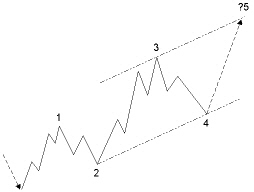
Figure 7.30: Price target for wave 5, method 1.
At the end of wave 4 in figure 7.30, draw a trend line through the end of wave 2 and wave 4. Draw a parallel line through the top of wave 3. The upper side of this trend channel is the target for wave 5.
However, most of the time, this target will not be reached by wave 5, except when there are extensions in the making of wave 5, or when wave 3 was weak with just a moderate move.
Method 2
Usually, wave 3 has the highest acceleration compared to waves 1 and 5.
Usually, wave 3 has the highest acceleration compared to waves 1 and 5.

Figure 7.31: Price target for wave 5, method 2.
If wave 3 makes a bigger, sharp up-move like in figure 7.31, draw the basic trend line through the end of waves 2 and 4, but draw the parallel line through the top of wave 1.
This line will cross wave 3 and give a more moderate target for wave 5.
This line will cross wave 3 and give a more moderate target for wave 5.
Correction Waves Price Targets
Price Target for Wave A
Wave A in a zigzag correction will, most of the time, retrace 38.2% and 50% of the previous 5 wave.
Price Target for Wave B
Wave B in a zigzag correction mostly retraces 38.2% of wave A.
In a flat correction, this will be 100%.
A triangle correction will take back 90% to 100% of wave A.
An inverted widening triangle retraces commonly 61.8% of wave A.
In a flat correction, this will be 100%.
A triangle correction will take back 90% to 100% of wave A.
An inverted widening triangle retraces commonly 61.8% of wave A.
Price Target for Wave C
Wave C will, many times, equal wave A.
Wave C is a minimum 61.8% of wave A.
In a double zigzag, this is commonly 138.2% of wave W.
In a flat or double flat correction, this often is 138.2% of wave A, or wave Y, respectively.
Wave C in a triangle is generally 76.4% of wave B.
For an inverted widening triangle, this is commonly 123.6% of wave B.
Wave C is a minimum 61.8% of wave A.
In a double zigzag, this is commonly 138.2% of wave W.
In a flat or double flat correction, this often is 138.2% of wave A, or wave Y, respectively.
Wave C in a triangle is generally 76.4% of wave B.
For an inverted widening triangle, this is commonly 123.6% of wave B.
Price Targets for Waves D and E

Figure 7.32: Price targets for waves D and E.
In figure 7.32, at the end of wave B, draw a trend line through the beginning of wave A and the end of wave B.
You now can see a target for wave D, anticipating that a triangle correction is developing.
You now can see a target for wave D, anticipating that a triangle correction is developing.
You will get a confirmation at the end of wave C.
At the end of wave C, draw a line through the end of wave A and wave C. You now can see the target for wave E. Many times, wave E will not reach this trend line; conversely, it may pass it very shortly, next continuing the basic trend.
At the end of wave C, draw a line through the end of wave A and wave C. You now can see the target for wave E. Many times, wave E will not reach this trend line; conversely, it may pass it very shortly, next continuing the basic trend.
Price Target for Wave X
Wave X of a double zigzag, a double flat correction, or a triple zigzag is, most of the time, 50% of wave W. In a triple flat correction, this will be 76.4% of wave W.
Price Target for a Double Zigzag
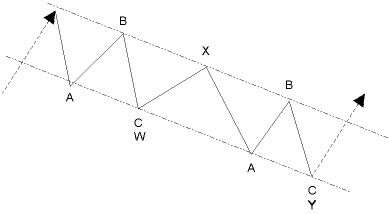 Drawing a price trend channel, it is a good idea to distinguish a double zigzag from an impulse wave (figure 7.33).
Drawing a price trend channel, it is a good idea to distinguish a double zigzag from an impulse wave (figure 7.33).Both have about the same characteristics.
However, double zigzags fit almost perfect within the price channel. On the other hand, if it is a wave 3, remember that a wave 3 mostly will break this channel, being the bigger, more accelerating move.
Figure 7.33: Price target for a double zigzag.